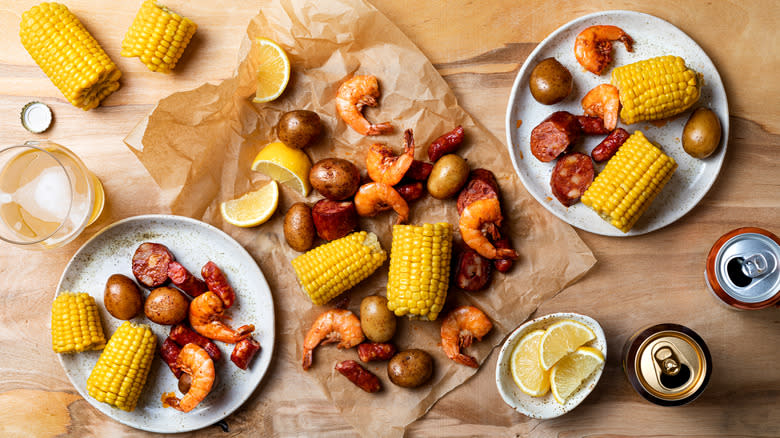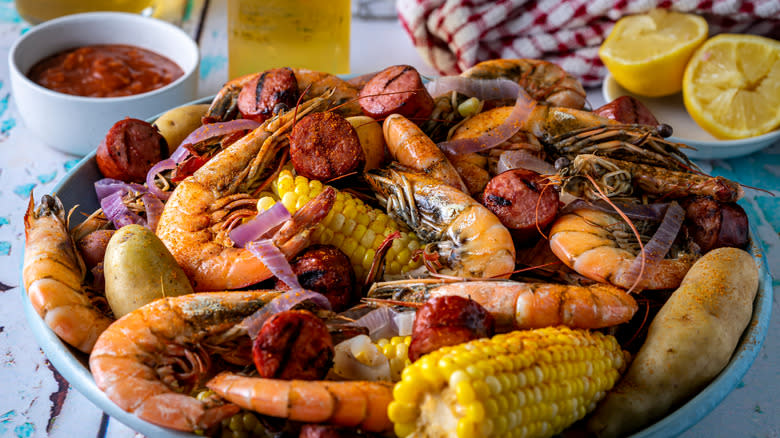Why You Shouldn't Add Shrimp To A Seafood Boil Until The Very End

Seafood boils are a delicious one-pot meal that celebrates the flavors of fresh seafood, potatoes, corn, and spices like Old Bay seasoning. The dish is popular along the East Coast, especially in South Carolina's Lowcountry, and in Louisiana. You can make your own version at home by boiling it on the stovetop or baking the dish in the oven if you want less of a mess. But no matter what cooking method you go with, it's essential to add the shrimp toward the end of the cooking time.
Why? Shrimp cooks much faster than the other ingredients. The potatoes, corn on the cob, sausage, and other seafood like lobster tails need at least 25 minutes to cook. Meanwhile, shrimp cooks in just a few minutes. And trust us, you don't want to overcook the shellfish or it will be tough and rubbery, which is a surefire way to ruin your seafood boil.
Read more: 15 Different Ways To Cook Fish
Adding Shrimp To A Seafood Boil

To prevent overcooked shrimp, toss it in the pot or pan when all of the other ingredients are done cooking. For reference, the potatoes are ready when you can easily pierce them with a fork. Other seafood, like clams, are ready when the shells open and lobster tails turn bright red. When it's time to drop in the shrimp, keep the shells on since it will help prevent them from quickly overcooking.
The exact cooking time for the shrimp varies by the size and cooking method, but the shellfish should be fully cooked in two to three minutes. But how do you know when the shrimp is thoroughly cooked? Your shrimp will be opaque and bright pink in color. You can also look to see if the shrimp tails are curled, another sign that it's ready to eat. And if you are really concerned about the shellfish being cooked thoroughly, use your kitchen thermometer to check for an internal temperature of 145 degrees Fahrenheit, per the USDA.
Read the original article on Tasting Table.

